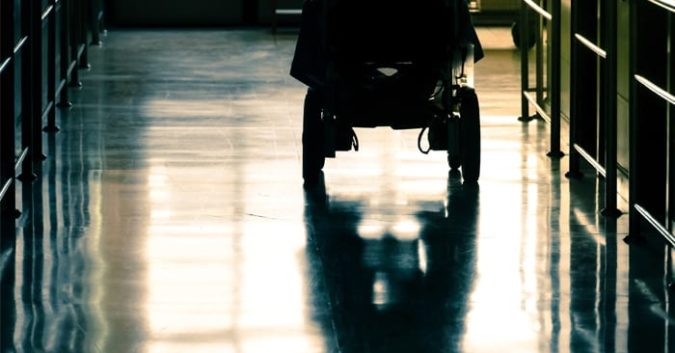In the wake of deeply disturbing reports of veterans receiving substandard treatment in federal nursing homes, the Department of Veterans Affairs (VA) has been pressured to increase transparency. For the first time ever, the agency has released the yearly healthcare inspection reports and staffing data it collects from VA nursing homes.
Unfortunately, the reports do little to improve the questionable reputation of VA nursing homes. Joint analysis conducted by The Boston Globe and USA Today found that inspectors cited 52 nursing homes in 25 states, the District of Columbia, and Puerto Rico for oversights that caused “actual harm” to residents.
The reports are full of disturbing stories. One aide oversaw a veteran with trouble swallowing. Their diet was supposed to be semi-liquid, yet the aide often fed his patient fast food. In one case, the veteran was discovered eating Styrofoam from the fast food packaging.
Inspectors found many cases where basic sanitary protocols were not followed. Infection control is a major component of keeping nursing home residents safe. As a population, they are often highly susceptible to disease. Time and time again, however, inspectors observed careless lapses in hygiene and sanitation practices, both of which opened the door to possible infection.
The agency’s reputation has come under fire from lawmakers who are tired of finding out about the mistreatment of veterans from the media instead of VA leadership. Making these documents available to the public marks an important step in the right direction. At the same time, however, the findings suggest that the VA has a long, difficult road ahead.
Understanding the Healthcare Inspection Reports
The newly released reports are based on inspections that took place between April and December 2018. Unannounced Inspections are conducted yearly by an outside contracted agency. To date, the VA has posted information on 101 of 134 total facilities. Data for the remaining nursing homes will be posted by October 2019, the agency said in a statement.
During these “surprise” visits, inspectors focused on the nursing home environment, staff and resident interactions, and the care residents received. They noted where protocol and best practices were not followed, and monitored the outcome. Some of the widespread infractions observed included:
- Lapses in Quality of Care
- Pain Mismanagement
- Improper Infection Control
- Unsafe or Hazardous Environment
- Nutrition and Dietary Issues
- Bed Sores (Pressure Sores)
With proper care, bed sores are almost always preventable. If left untreated, bed sores can become infected and quickly become life-threatening. Remarkably, in 26 of facilities, inspectors found that staff failed to enact procedures to prevent and treat bedsores. One resident in Cincinnati had 5 bedsores in 6 months — and staff still did not get him the proper care he required.
VA’s Response to Nursing Home Inspection Reports
Looking at the results, VA Secretary Robert Wilkie said, “Overall, VA’s nursing home system compares closely with private sector nursing homes.” And this, he noted, was despite the fact that, on average, VA nursing homes care for “sicker and more complex patients” than do private facilities.
It can be hard for veterans and their families, especially those who have been hurt, to share in Wilkie’s optimism. Private nursing homes are plagued with horrific problems of their own. The benchmark for quality should be tethered to healthcare goals — such as keeping patients safe, fed, and properly medicated — instead of “comparing closely” with a struggling private sector.
VA Needs to Stay Committed to Transparency
Disclosing this information to the public comes as part of a broader VA push to increase transparency and improve the embattled agency’s reputation with veterans and tax payers. Last year, the internal ratings of VA nursing homes were made public for the first time.
Getting all of this information out into the open is good. It will help veterans and their families make informed decisions and hold bad actors accountable. There were 7 facilities where no deficiencies were observed, and it is important to recognize the potential for more VA nursing homes to rise to this level of patient health and safety.
At the same time, inspectors described 11 facilities where veteran safety was in “immediate jeopardy.” The quality of care veterans receive, it seems, depends on which facility they enter. And that is not a fair or honorable way to treat the men and women who served our country. Receiving proper care in a VA nursing home should not be a matter of getting lucky.
The bottom line is that every veteran who needs the specialized care of a nursing home should be able to walk into a VA facility with confidence. Right now, sadly, that day is a long way off.
